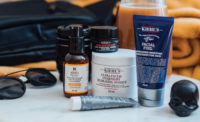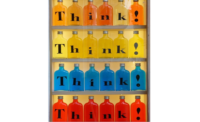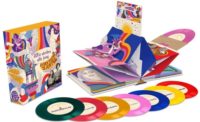Writers have "show, don't tell." Marketers have "teach, don't sell." Keep those old adages from feeling stale for your brand by getting a little creative with your marketing and your packaging.
Most packaging materials focus on inserts that teach people how to enjoy a product. These sheets of paper are easy to add. Unfortunately, they’re expected and risk becoming overlooked as every single e-commerce box that arrives at home is stuffed with them.
Get back to basics and reach the customer before they dive into the papers in a product's packaging and toss them aside. Here are four tactics backed by data that you can use on the packaging directly around your product as well as on those shipping boxes your warehouse sends out to e-commerce shoppers.
1. Look for Always-Sell Opportunities
Let’s start with a practical opportunity for every package you create: highlighting additional items in your inventory. Anything that works together or provides further support to your customer is a worthwhile choice.
That’s not a revolutionary prospect. What can be revolutionary is how you showcase the products you want to push, especially if you’re running specials.
Every package, no matter the material, can now be “Internet-connected” on some level. This can be as complex as some of the new augmented reality and NFC smart labels or something as simple as writing out your website.
Match your efforts to your budget and look for evergreen opportunities.
If you are a business who is always running sales and promotions, don’t focus specifically on a product (so that you’d have to change packaging whenever things update) but instead focus on the deal aspect. A QR code that sends someone to a landing page is a perfect option because your marketing team can change the landing page as needed, but your packaging team doesn’t need to adjust what they’re doing when a new campaign starts.
These always-sell opportunities mean no matter when someone orders your product, they’re being offered a deal. Put the code inside your packaging so that it has to be opened to be accessed and you breed a little exclusivity without having to get in the way of quality design, colors, digital printing, and more.
Warehouses love efficiency. Changing packaging around continually can impact that efficiency and also cost your operation money if it means you have old left-over packaging. Whenever you look to add intelligent packaging sensors or tactics, from NFC and RFID to augmented reality or logistics tools, seek out ways that don’t impact fulfillment and can be used across multiple campaigns and marketing efforts.
The boon of digital is that we’ve created dynamic distribution channels and you can keep the buyer’s path (website, QR code, augmented reality CTA) the same while changing the final destination.
2. Your Commitment to the Customer
One of the biggest complaints you’ll hear about Amazon packages that arrive safely is that they often feature a giant box and plenty of protective material for something that seems very small. While there are a variety of logistically-sound reasons to do this — and you can see it at almost any point in a standard supply chain — it is perplexing and frustrating to the customer.
Packaging is about the experience, and it doesn’t just have to be in the massively complex and exciting world of unboxing. Packaging is about you as the customer getting the thing you want in a way that keeps it safe and usable.
This makes customer-focused elements in your packaging equivalent to marketing elements. Again, we can look back to Amazon for this and its program of “Amazon-Certified Frustration-Free Packaging.” It’s such a big deal that the retail giant uses it as a marketing and customer service element in its own work.
If you’ve taken any steps to make your packaging more comfortable to open, highlight this directly on the package. It can be as simple as a tiny graphic that shows how to open it. If you’ve taken other steps, broadcast them as well. Ensure that your notes around recycled materials, recycling options, easy-open or -close elements, and much more are all readily available.
In many cases, businesses are selling products designed to make someone’s life easier or more enjoyable. It’s just smart marketing to make your packaging part of that experience and then highlight it!
3. Your Commitment to a Cause
Roughly 90% of your American customers will be more loyal to you and trust you more if you support social or environmental causes. Nearly as many say that knowing a product has a social or environmental benefit helps them make their final purchase decision between similar products.
The best news for your packaging is that most consumers, and especially millennials, will identify that you are taking an environmental stance when you use recyclable packaging and eco-friendly materials in your packaging. This can include the use of natural fill elements like straw, packaging made out of recycled materials, packaging that itself can be recycled, and much more.
Every package is a chance to demonstrate your commitment and educate your customer.
Consider adding a list of your policies to the package alongside the icons that denote it can be recycled. Did you save money by cutting wastewater expenses with new materials or a custom box? Have you made a switch away from plastic and are even able to recycle the scraps that end up on your factory floor? Did the local power company switch over to a certain percentage of green energy (which means you did too)? Are your vendors greening their efforts so that your supply chain is greener also?
Green marketing is big business. Every step you make in this realm is a marketing piece as well as a company commitment.
And if you’re worried about how to get started on these initiatives — because leadership often likes to cut marketing budgets but isn’t always keen on taking development direction from the department. Point to low-cost leader Walmart and the large-scale green revolution it has been able to start to the benefit of its bottom line and the success of its partners and communities.
4. Plain Old Language
More Americans and customers across the globe are falling into the LOHAS cohort — people living a “lifestyle of health and sustainability” — and they’ve already driven significant changes in the way we package and create products.
The LOHAS group led the charge to have clearer ingredients lists, which is leading to a majority of American consumers looking for products with fewer ingredients when they make a purchase. This has coincided with marketers making the labels themselves larger in some cases, giving white space around the ingredients list to make it feel even smaller.
Simple lists with words (and ingredients) we can pronounce are easier to understand and make us feel more confident in our purchase decisions.
No matter what industry you are in, you can achieve comparable results by focusing on plain language.
If you’re not a product with ingredients that matter, focus on the supporting services and warranties that you provide. Instead of burying the money-back guarantee on page 20 of the manual, give customers a first glimpse right on the back. If you are in a highly technical realm, do the same with warranties to make the buyer trust the quality of your product more.
Take a moment with each option here to make it clear, concise and easy for anyone to understand.
When you take time to simplify your customer’s purchase process, they give you credit for doing the same with help and support. What’s important for marketers to realize is that you get the credibility boost right away, without having to wait for the customer to try to solve an issue.
It’s just one of many ways, a few of which we’ve discussed, that packaging can improve your reputation and secure the sale before you’ve had to prove it to the customer.



